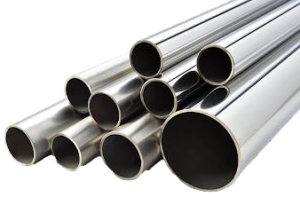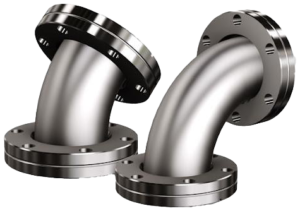Meta Description
Learn about 317L stainless steel: chemical composition, corrosion resistance, mechanical properties, and applications in chemical plants and heat exchangers.
Introduction
Stainless steel 317L is a low-carbon austenitic grade that offers superior corrosion resistance compared to 316L. Thanks to its higher molybdenum content, 317L provides excellent resistance to chemical attack, particularly from acids and chlorides. Therefore, it is widely used in chemical plants, pulp and paper mills, marine environments, and heat exchanger systems.
At DLSS, we manufacture pipes, tubes, and flanges in 317L stainless steel that meet ASTM, ASME, and EN standards. You can also view our DLSS Products Page for more details.
Chemical Composition of 317L Stainless Steel
The enhanced corrosion resistance of 317L comes from its alloying elements. Typical composition is:
| Element | Content (%) |
|---|---|
| Carbon (C) | ≤ 0.03 |
| Chromium (Cr) | 18.0 – 20.0 |
| Nickel (Ni) | 11.0 – 15.0 |
| Molybdenum (Mo) | 3.0 – 4.0 |
| Manganese (Mn) | ≤ 2.0 |
| Silicon (Si) | ≤ 1.0 |
| Phosphorus (P) | ≤ 0.045 |
| Sulfur (S) | ≤ 0.030 |
| Nitrogen (N) | ≤ 0.10 |
As a result, the higher molybdenum and nickel content distinguishes 317L from 316L, giving it stronger resistance to localized corrosion such as pitting and crevice attack.
Mechanical Properties
317L maintains strength and toughness over a wide range of temperatures. Its typical mechanical properties are:
| Property | Value |
|---|---|
| Tensile Strength | ≥ 515 MPa |
| Yield Strength (0.2% offset) | ≥ 205 MPa |
| Elongation | ≥ 35% |
| Hardness (HB) | ≤ 217 |
In addition, its low carbon content prevents carbide precipitation during welding, improving weldability and reducing the risk of intergranular corrosion.
Corrosion Resistance
Compared with 316L, 317L stainless steel performs better in environments containing chlorides, sulfuric acid, and acetic acid. Moreover, it shows excellent resistance to:
- Pitting and crevice corrosion in seawater and brine.
- Stress corrosion cracking in hot chloride solutions.
- Oxidation at elevated temperatures up to 870°C.
Therefore, it is often chosen for chemical process equipment where long service life is critical.
Applications of 317L Stainless Steel
317L is widely applied in industries requiring both strength and corrosion resistance. For instance:
- Chemical Processing: Reactors, evaporators, and piping exposed to acids.
- Pulp and Paper Industry: Bleaching equipment and recovery systems.
- Marine Environments: Seawater piping, desalination plants, and offshore platforms.
- Heat Exchangers and Boilers: Tubes, shells, and tube sheets in corrosive media.
- Food and Pharmaceutical Equipment: Where hygiene and corrosion resistance are essential.
In addition, DLSS supplies ASME SA182 F317L forged flanges, as shown in our Chemical Plant Case Study.
Why Choose DLSS for 317L Products
DLSS offers a wide range of 317L stainless steel products, including seamless tubes, forged flanges, and fittings. Our advantages include:
- Compliance with ASTM A312, A213, and ASME SA182 standards.
- Advanced production lines ensuring tight tolerances and bright annealed surfaces.
- Third-party inspection by ABS, DNV, BV, and LR upon request.
- Global supply experience across 40+ countries.
For buyers seeking durable solutions in harsh environments, DLSS delivers not only material but also complete technical support.
Conclusion
317L stainless steel is a reliable choice for industries facing aggressive chemical and marine conditions. With its enhanced corrosion resistance, excellent weldability, and proven performance, it outperforms conventional grades like 316L. DLSS is ready to provide high-quality 317L tubes, pipes, and flanges tailored to your project needs.


